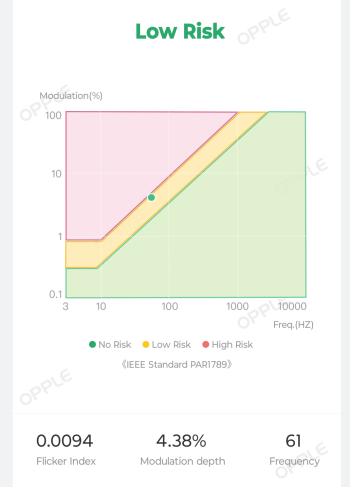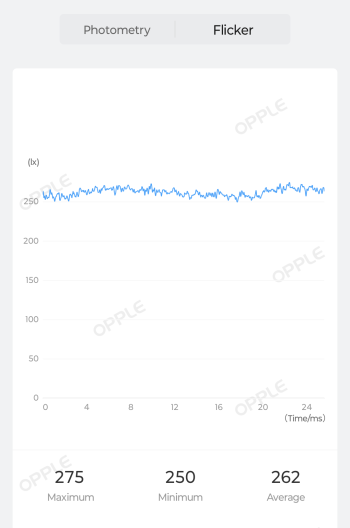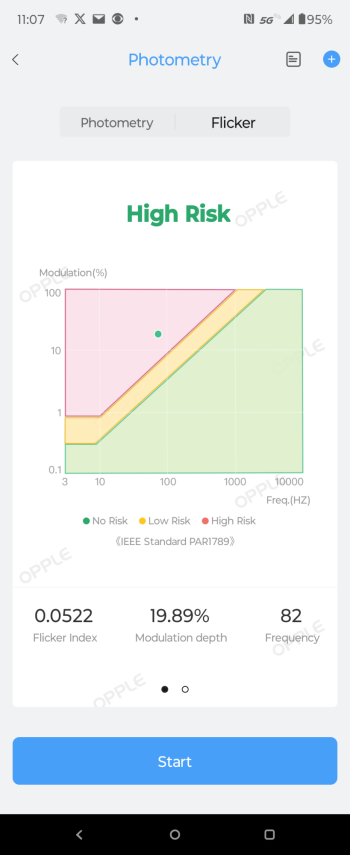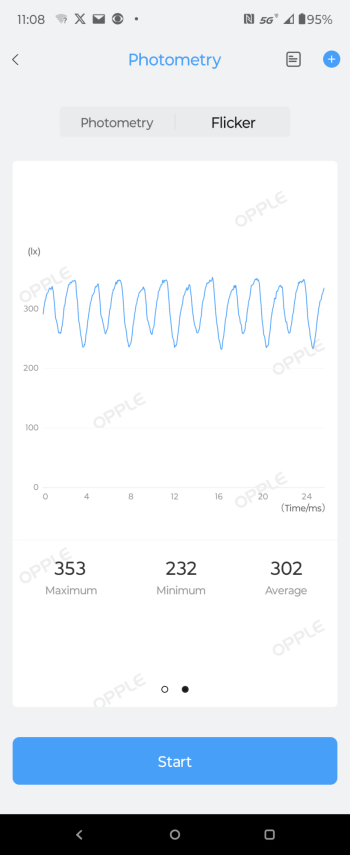Finally got some time to drop by a store for a short test with the Radex Lupin. They had the 15, 15 Pro, and 15 Pro Max on display; the 15 Plus was missing (this was an electronics store, not an Apple Store).
Here are the test results; all measurements were taken with auto brightness off; RWP measurements were taken at 100% brightness.
| Model | 100% | 75% | 50% | 25% | RWP 25% | RWP 50% | RWP 75% | RWP 90% |
| iPhone 15 | 5.2 | 6.5 | 10 | 12 | 5 | 5 | 5.2 | 7 |
| iPhone 15 Pro | 12.3 | 13.5 | 16.2 | 19 | 12.7 | 13.5 | 14.9 | 17.3 |
My previous measurements of the 14 range are here:
iPhone 14 measurements
The 15 Pro Max was essentially the same as the 15 Pro.
Note: The brightness settings are a rough estimation (i.e. what brightness it is, since the slider doesn't show any percentage; so it is possible that there is a bit of +/- movement regarding what exact brightness the phone was at).
Note 2: Interestingly, just measuring a 14 that I have at home, here are its values (here, I use a shortcut to set the brightness directly, so the brightness setting can be assumed to be accurate):
| Model | 100% | 75% | 50% | 25% | RWP 25% | RWP 50% | RWP 75% | RWP 90% |
| iPhone 14 | 4 | 6.8 | 9.9 | 12 | 3.9 | 4.2 | 4.8 | 6.8 |
These are slightly different to the measurements I've taken in my previous link above, but I think that is probably explained by the brightness slider inaccuracy.
Note 3: RWP 95% on the iPhone 14 measures ~8.4.
Preliminary conclusion: It seems that the 14 and 15 are aligned, as well as the 14 Pro and the 15 Pro. Minor differences in values, I would suggest are explained by the difference between in store measurement with a brightness slider, and using a shortcut for the 14 that I have at home.
I think if one was to give a model a go, then the 15/15 Plus would be the ones, and run it at 100% brightness, with a RWP setting that isn't too bright. The Radex Lupin manual says that measurement for office monitors should not exceed 5%, and light flickering for visually focused tasks should not exceed 10%. Light flickering up to 20% for all other tasks is acceptable, according to the manual.
So, potentially 100% brightness, with an RWP between 75% and 90%, and use Night Shift/Colour Filters to adjust intensity/colours, may be the best bet to try, at least based on these measurements, and not accounting for people's different reactions.







